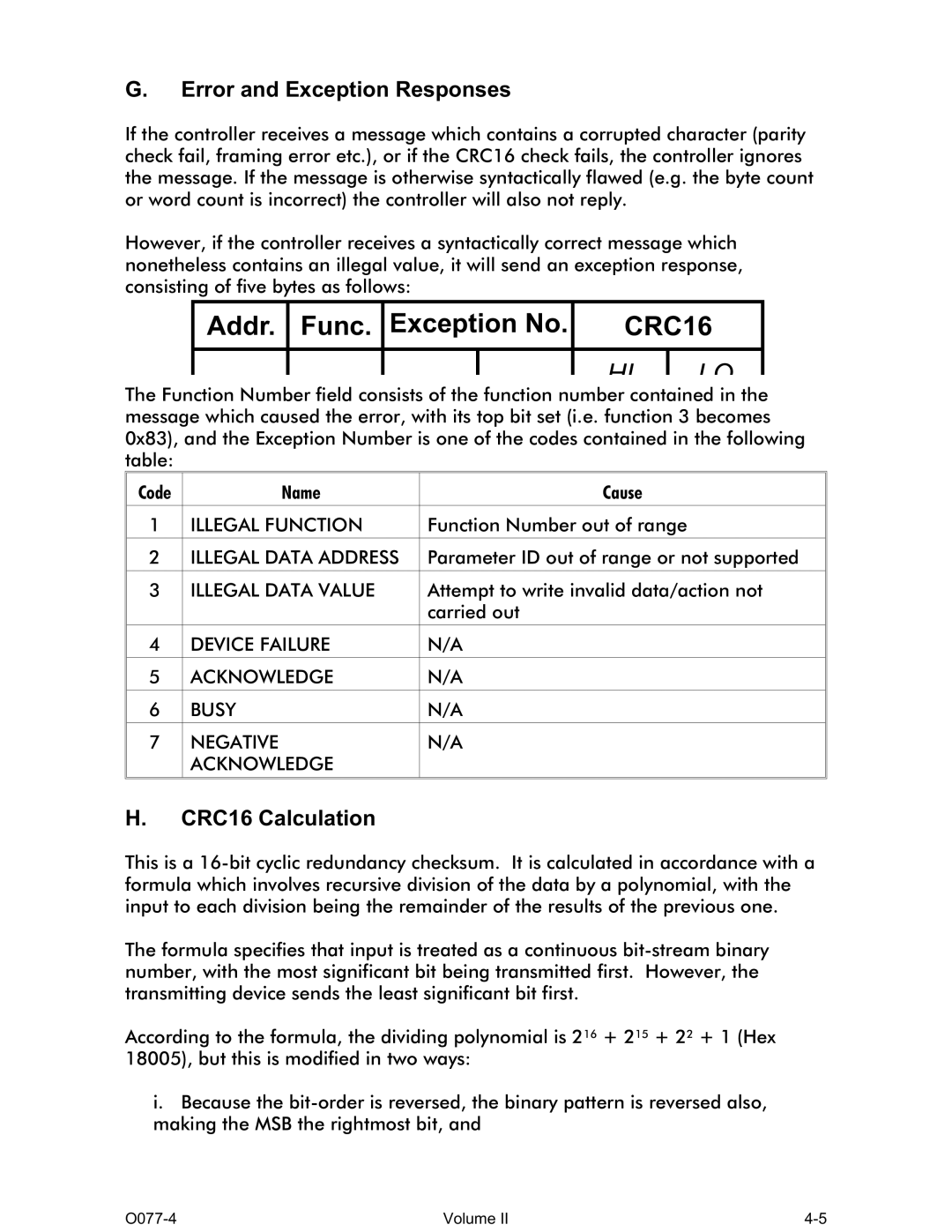
G.Error and Exception Responses
If the controller receives a message which contains a corrupted character (parity check fail, framing error etc.), or if the CRC16 check fails, the controller ignores the message. If the message is otherwise syntactically flawed (e.g. the byte count or word count is incorrect) the controller will also not reply.
However, if the controller receives a syntactically correct message which nonetheless contains an illegal value, it will send an exception response, consisting of five bytes as follows:
Addr. Func. Exception No. | CRC16 | |
|
|
|
| HI | LO |
The Function Number field consists of the function number contained in the message which caused the error, with its top bit set (i.e. function 3 becomes 0x83), and the Exception Number is one of the codes contained in the following table:
Code | Name | Cause |
|
|
|
1 | ILLEGAL FUNCTION | Function Number out of range |
|
|
|
2 | ILLEGAL DATA ADDRESS | Parameter ID out of range or not supported |
|
|
|
3 | ILLEGAL DATA VALUE | Attempt to write invalid data/action not |
|
| carried out |
|
|
|
4 | DEVICE FAILURE | N/A |
|
|
|
5 | ACKNOWLEDGE | N/A |
|
|
|
6 | BUSY | N/A |
|
|
|
7 | NEGATIVE | N/A |
| ACKNOWLEDGE |
|
|
|
|
|
|
|
H.CRC16 Calculation
This is a
The formula specifies that input is treated as a continuous
According to the formula, the dividing polynomial is 216 + 215 + 22 + 1 (Hex 18005), but this is modified in two ways:
i.Because the
Volume II |
